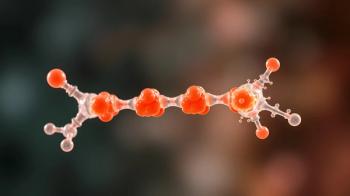
Experimental Painkiller Could Match Strength of Morphine Without Addiction
Engineered variants of neurochemical endomorphin could potentially relieve pain without causing drug addiction.
A newly developed painkiller could match the strength of morphine while preventing addiction, according to the results of a recent study.
Opium-based drugs are the most common treatments for severe and chronic pain. However, these medications are highly addictive and patients often develop a tolerance, putting them at a risk for drug overdose and drug abuse.
It has been reported that there are thousands of overdoses a year in the United States, while the side effects to these treatments can cause motor impairment and potential fatal respiratory depression.
In a study published in the journal Neuropharmacology, researchers evaluated engineered variants of neurochemical endomorphin compared with morphine in rats, in order to measure side effects and efficacy.
The new drug was found to produce longer pain relief without slowing breathing in the rats, while morphine showed significant respiratory depression. Furthermore, the endomorph drug had no significant signs of motor impairment, as opposed to morphine.
Researchers also discovered the drug has significantly less tolerance than morphine and does not produce spinal glial cell activation, an effect of morphine that contributes to tolerance.
"These side effects were absent or reduced with the new drug," said lead investigator James Zadina, VA senior research career scientist and a professor of medicine, pharmacology and neuroscience at Tulane University School of Medicine. "It's unprecedented for a peptide to deliver such powerful pain relief with so few side effects."
Researchers also sought to determine whether the new drug has addictive properties similar to opiates. On morphine, it was found that the rats spent more time in a compartment where they were administered morphine, while their behavior was not affected by the new drug.
It was also found that pressing a bar that produced an infusion of neurochemical endomorphin just caused the rats to try and get the morphine instead of the new drug, which suggests a decreased likelihood of human addiction and drug abuse.
With these promising results, researchers are hoping the drug can be tested in clinical trials within the next 2 years.
Newsletter
Stay informed on drug updates, treatment guidelines, and pharmacy practice trends—subscribe to Pharmacy Times for weekly clinical insights.


















































































































































































































